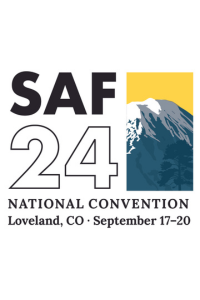Back
Science Flashes
Silviculture
Environmental conditions influence fertilization response within slash pine plantations on the Lower Coastal Plain, USA
Thursday, September 19, 2024
4:30 PM – 4:38 PM MST
Location: Embassy Suites, Snowberry

Noah Shephard, n/a
PhD Student
University of Georgia
Athens, Georgia, United States- SK
Stephen Kinane, PhD
Assistant Professor • Warnell-Sch Forestry & Nat Res
University of Georgia, United States
Co-Author(s)
Speaker(s)
Fertilization doesn’t always increase slash pine aboveground production in the southern USA. Initial results show that environmental covariates like soil class, location, annual precipitation, and minimum August temperature can influence the magnitude of stem diameter response.
Learning Objectives:
- Upon completion, participant will be able to comprehend that slash pine fertilization diameter response is better explained with non-linear models than linear models and generalized additive models (GAMs) provide a useful framework for more creative endeavors.
- Upon completion, participant will have a greater understanding on how models can be used to interpolate maps from silvicultural response data, like, slash pine radial growth from fertilization. Additionally, participants will be able to describe how different environmental conditions effect nutrient amendment response.
- Upon completion, participant will understand the power behind spatial analysis to enhance silvicultural decision making. It will be conveyed, from a spatial and temporal perspective, whether fertilization within a slash pine plantation is worthwhile given certain environmental variables.

